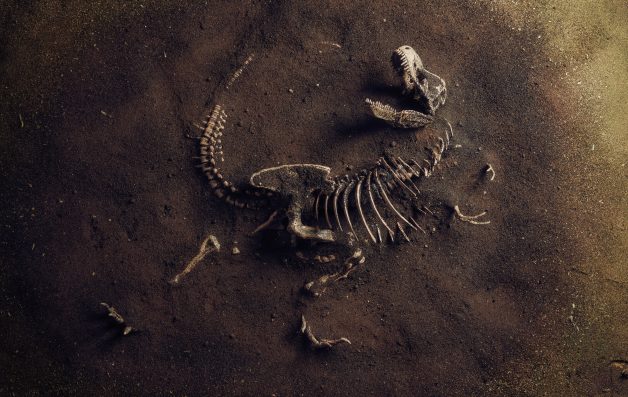Removing Human Bias From The Equation, A New Study Allowed Computers To Settle The Debate About What Really Caused The Demise Of Dinosaurs

For a long time, scientists have had differing opinions on how dinosaurs went extinct. Many believe that a giant asteroid was the culprit, slamming into the earth and wiping out the majority of life on the planet 66 million years ago. Others are more confident that massive volcanic eruptions killed off all the dinosaurs.
Recently, a new study has been conducted that may put an end to this ongoing debate. Researchers at Dartmouth College removed scientists from the discussion, eliminating human bias and letting the computers settle the argument instead.
A graduate student named Alex Cox and an assistant professor of earth sciences, Brenhim Keller, tested out a new modeling method powered by interconnected processors. Without the help of human input, the processors are able to analyze heaps of geological and climate data.
Cox and Keller used almost 130 processors to reverse-engineer the fossil record and determine what conditions led to the Cretaceous-Paleogene (K-Pg), which was the extinction event that paved the way for mammals to rule the earth.
They were motivated to create the model because they wanted to assess the question of the dinosaurs’ demise without a predetermined hypothesis, which is how experiments usually start. But instead, they took the opposite approach.
“Most models move in a forward direction. We adapted a carbon-cycle model to run the other way, using the effect to find the cause through statistics, giving it only the bare minimum of prior information as it worked toward a particular outcome,” said Cox.
The model generated more than 300,000 possible results regarding carbon dioxide emissions, sulfur dioxide output, and biological productivity in the one million years before and after the K-Pg extinction event.
The processors recalculated, edited, and modified their conclusions until they landed on a scenario that matched what the fossil record showed. They completed the task through a kind of machine learning called Markov Chain Monte Carlo, which is similar to how a smartphone predicts what you’ll type next.
The fossil record contained geochemical and organic residue that depict the conditions that dinosaurs suffered through before becoming extinct. The food chain was broken as plants and animals all over the world were destroyed as the climate fluctuated from weather that was unbearably hot to temperatures that were below freezing.

trafa – stock.adobe.com- illustrative purposes only
The model has suggested that the poisonous gases from the volcanic eruptions of the Deccan Traps in what is now western India were enough to kickstart the global extinction. The Deccan Traps had been pouring out toxic fumes for roughly 300,000 years before the asteroid struck what we currently know to be Mexico’s Yucatan Peninsula.
It is estimated that the Traps unleashed up to 10.4 trillion tons of carbon dioxide and 9.3 trillion tons of sulfur into the atmosphere during the one million years they had been erupting. So, it seems that the asteroid was not primarily responsible for the dinosaurs’ extinction and that it merely helped bring further devastation to a planet already in peril.
Still, it is unclear just how much each event contributed to the mass extinction. But, all in all, the study has shown that by taking the result of a situation, it is possible to determine the cause. And it has taken scientists a step further toward figuring out what really happened to the dinosaurs.
“So far, people in our field have been more fascinated by the novelty of the method than the conclusion we reached. Any earth system for which we know the effect but not the cause is ripe for inversion. The better we know the output, the better we’re able to characterize the input that caused it,” said Cox.
If true crime defines your free time, this is for you: join Chip Chick’s True Crime Tribe
Fall Decor Ideas To Pumpkin Spice Up Your Bathroom This Month
Sign up for Chip Chick’s newsletter and get stories like this delivered to your inbox.
More About:News





